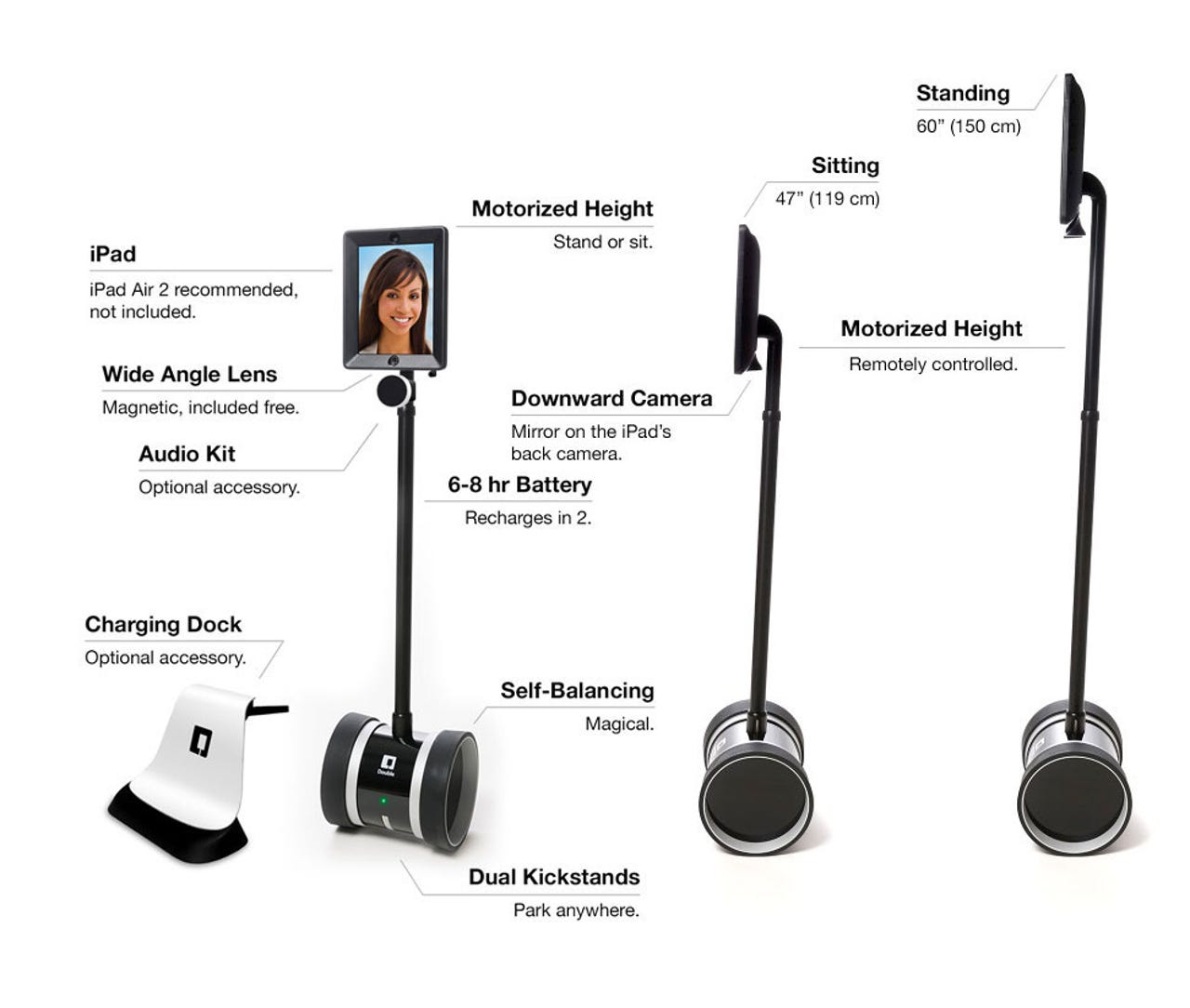CES 2016: Double Robotics nails cheap telepresence

Telepresence robots have always seemed kind of gimmicky. But a lot of new tech starts that way. Movies on your phone? Puh-lease. A 140-character limit? Sure, that'll work.

Double Robotics, maker of bare-bones and comparatively inexpensive telepresence robots, just announced Double 2 at CES, its biggest product launch to date. With some needed improvements, this entry-level telepresence solution may be the product to blow the category wide open.
A couple weeks ago I got a chance to preview Double 2 from the comfort of my home. After logging in with some borrowed credentials, I was virtually transported from Los Angeles to Burlingame, CA, near San Fran. Before me, in a large, empty room set up for such demos, stood Double Robotics co-founder and CEO David Cann.
"Hey David."
"Hi Greg, nice to see you."
Spooky. He could see me, I could see him, and I could move. Skype left me well-prepared for the video conferencing, but the ability to move completely changed the experience.
But first things first. I noticed that I--er, my virtual self--was looking up at David. I'm 6'4" in real life so if I'm going to be virtually present I'm going to be a virtual tall drink of water. With the click of a mouse my robot neck extended and I was more comfortably face-to-face with my interlocutor.
Double 2 is not a ground-up redesign of the original. Instead it's a nice refinement. It still looks a bit like a broomstick mounted on a hoverboard carrying a tablet, which, save for some fancy engineering and wireless controls, it is. You control the device at home through your browser. Like the original Double, the Double 2 costs $2,499 for the base model (tablet not included). A backwards compatible external camera kit for the iPad costs an additional $249.
The commands are simple, though the latency takes a little getting used to. My bot was a little slow to respond, though I was using some lackluster home broadband, so no surprise there.
Robotics
The new version adds a lateral stabilizing system that allows it to go over thresholds and wires easier, so it's more adept at navigating office terrain. A new speed boost setting allows the robot to jet down hallways 80% faster, which I suppose is useful if you work in a huge office park, though in a confined room it felt more whizbang than functional. More helpful, the new camera kit offers a much improved field of view over the iPad camera, which is important for contextual awareness.
During my test drive, I steered the robot around the room, looked at my virtual self in a mirror, and conducted the interview. At first I felt self-conscious in a way that I don't when using videoconferencing interfaces. That speaks to the depth and nuance of the telepresence experience. When you're embodied, even robotically, you suddenly become aware of your movements, your surroundings, and the people around you in new ways. Going from videoconferencing to telepresence is like going from 2D television to virtual reality. It's just a different experience.
Cann told me that he usually suggests that telecommuters stay connected to their robot all day, leaving the connection open in their browser. This allows you to jump into conversations that are happening nearby. It also makes you more accessible for quick informal powwows.
For those who have always dreamed of working from home, the "always-on" approach could also be a nice carrot in negotiations with your company. Some version of you is in the office, after all, even if another version of you is wearing pajama bottoms. Win-win.